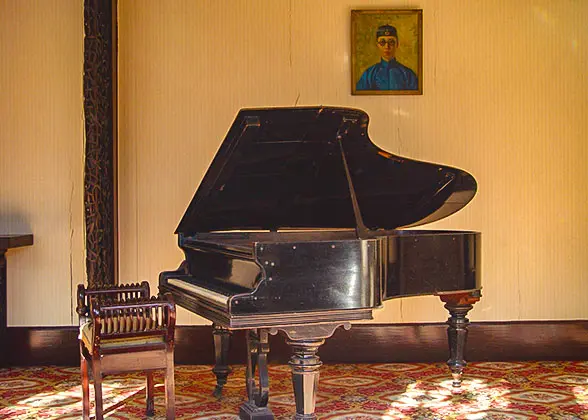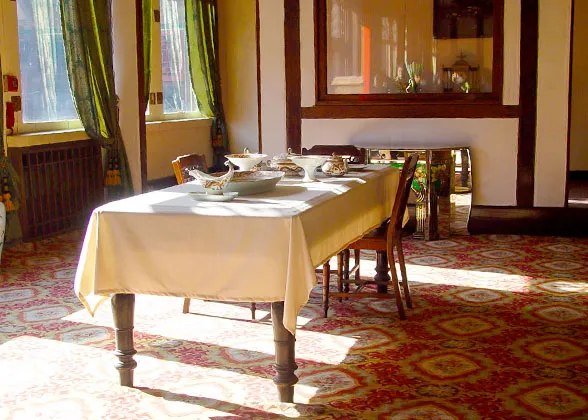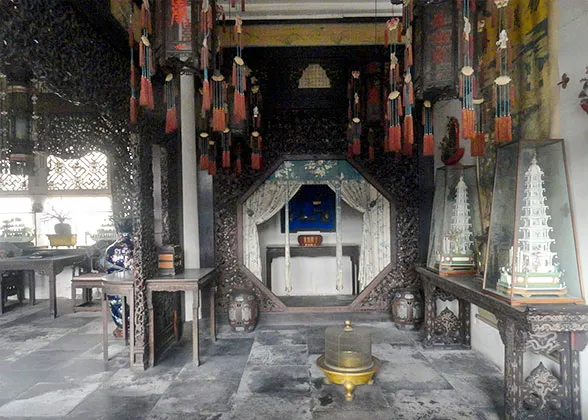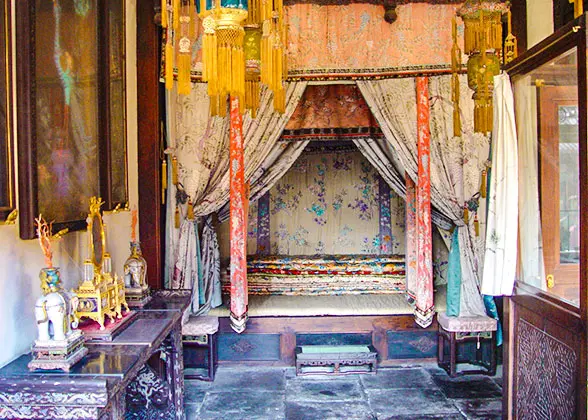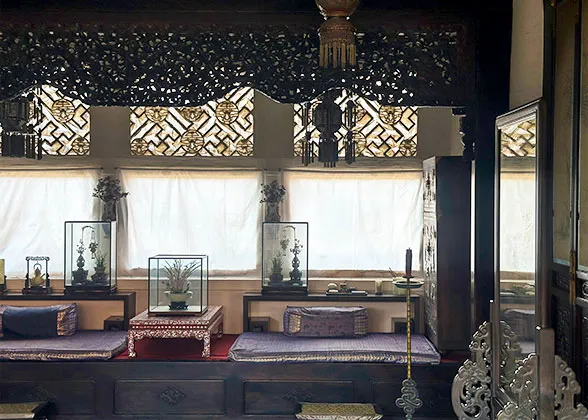Palace of Gathered Elegance (Chuxiugong)
The Palace of Gathered Elegance, Chuxiugong in Chinese, is one of the Forbidden City's Six Western Palaces and used by the emperors’ concubines to live from 1420 to 1911 in Ming and Qing Dynasties. Empress Dowager Cixi (1835~1908), a prominent female ruler at the end of Qing Dynasty (1644~1911), was its most famous occupant.
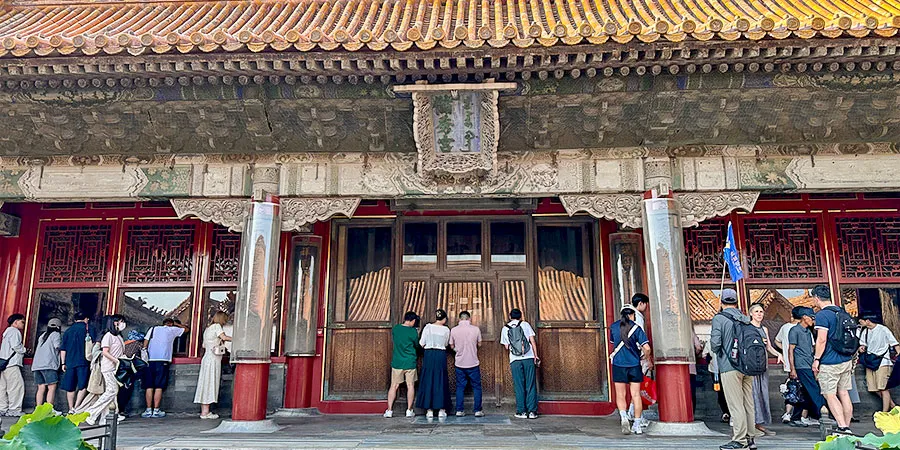 |
| Palace of Gathered Elegance |
Brief History of the Palace of Gathered Elegance
1420~1535: Once Named Palace of Longevity and Prosperity
The Palace of Gathered Elegance, initially named "Longevity and Prosperity", has stood since 1420 as a home for the concubines of Ming Dynasty (1368~1644) emperors. In 1535, Emperor Jiajing (1507~1567) named it "Gathered Elegance", which has endured till now. However, detailed records of its residents during the Ming Dynasty are scarce.
1852~1861: The Rise of Empress Dowager Cixi
Fast forward to 1852, when this palace became the starting point for Empress Dowager Cixi's incredible journey.
In the Qing Dynasty, the imperial concubines were ranked into eight levels: Empress, Imperial Noble Consort, Noble Consort, Consort, Concubine, Noble Lady, Constant Attendant, and Attendant. Cixi began her journey as a concubine to Emperor Xianfeng (1831~1861), holding the title of Noble Lady. Within two years, she climbed the rank of Concubine.
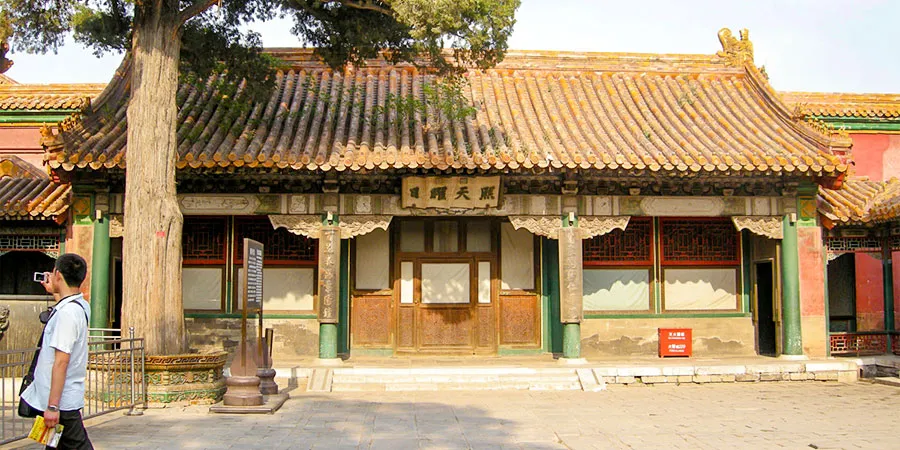 |
| Side Hall of Gathered Elegance Palace |
In 1856, her status soared further when she gave birth to the emperor's only son which skyrocketed her first to the rank of Consort, and then, within just a year, to the Noble Consort. It's worth noting that at the time Cixi was promoted to Noble Consort, since there was no Imperial Noble Consort, she was second only to the Empress.
Upon Emperor Xianfeng's demise in 1861, the six-year-old Tongzhi Emperor (1856~1875), son of Cixi, ascended the throne. Subsequently, Cixi assumed the mantle of Empress Dowager, the foremost among the royal females. To better "assist" the boy emperor's reign, she moved to the Hall of Mental Cultivation and began to wield power behind the scenes, gaining the position as the actual ruler of the country.
1884~1894: Lavish Renovations for Empress Dowager Cixi's Return
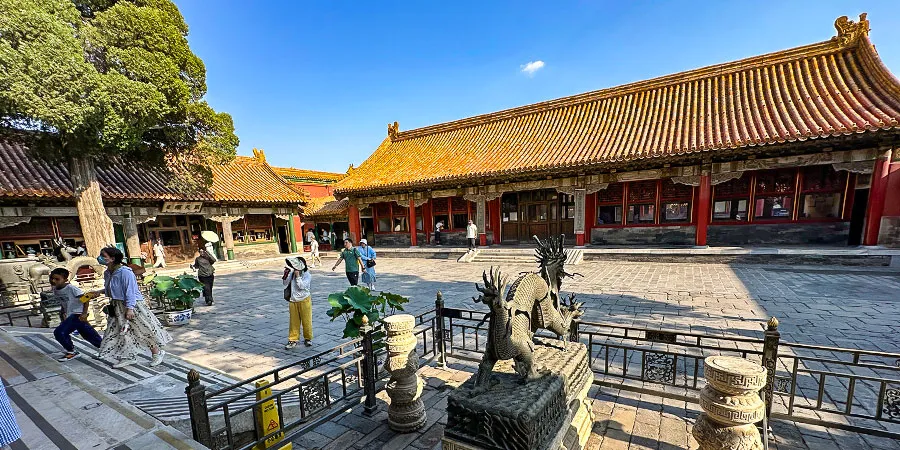 |
| Palace of Gathered Elegance Courtyard |
A year before Cixi's 50th birthday in 1884, she decided to renovate the Palace of Gathered Elegance and reside back in it. To show her dignity as the most prestigious royal, she enlarged her living quarter to a grand four-courtyard complex by merging it with the Palace of Earthly Honor. Meanwhile, this luxury-lover spent 630,000 taels (52,482 pounds) of silver on the palace renovation, making it the most opulent and exquisite of the Six Western Palaces.
1922~1924: Empress Wanrong Introduced Western Elements
In 1922, Empress Wanrong (1906~1946), wife of the last Qing Emperor Puyi (1906~1967), resided in the Palace of Gathered Elegance. With a favor of Western culture, she turned the rear hall into a stylish Western dining room adorned with sparkling crystal chandeliers and a piano. On the dining table, she used to teach Puyi the Western tableware with a set of knife and fork.
|
|
What to See Today: Ornate Main Hall & Ambitious Exteriors
Today, visitors can witness the Palace's main hall (of the same name "Palace of Gathered Elegance"), restored in the opulent version after Cixi returned in 1884.
Main Hall: Back to Cixi's Luxurious Life
Unlike other Qing rulers who made the main hall as a workplace and the rear hall as a living quarter, Cixi broke the tradition to facilitate her life by blending both of the usages within the main hall.
In the main hall's central room, Cixi received her ministers on the middle throne with a bright yellow cushion and armrests. A white s-shape jade scepter and a red coral spittoon are on both sides. Other furnishings, such as the intricately carved rosewood screen and the lanterns hung from the ceiling, feature motifs in similar themes - good fortune and longevity.
|
|
To the east, Empress Dowager Cixi's dining area awaits. The table to the north displays ivory dragon and phoenix boats alongside a red coral bonsai. Adjacent to this is a small cubicle for her to offer sacrifices to the Buddha, with a table beside it exhibiting two ivory pagodas and a small British clock. Whenever she felt agitated, she would kneel and pray here.
The first room on the west side is for resting and changing. In the past, the large light blue porcelain jar on the floor would be filled with fresh fruits to scent the room. East to it, a mirror allowed Cixi to admire her attire after changing from court clothes. Disliking the lingering food smells from the west room, she often retreated here to rest amidst the refreshing fruit aroma.
Further west lay her bedroom, where nine layers of precious silk quilts are on the large red-sandalwood bed. Hand-embroidered drapes, crafted by top artisans using gold and silver threads, framed the bed. By the southeast window, an exquisite dresser held her self-made and tribute cosmetics. Cixi always said, "A woman who shuns the mirror might as well shun life itself!"
|
|
Decorations: Step into Empress Dowager Cixi's Inner World
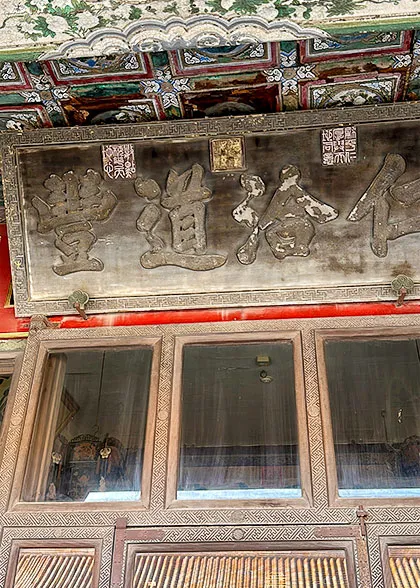 |
| A Plaque Inscribed Cixi's Calligraphy |
Plentiful calligraphy works in the Palace of Gathered Elegance reflect Cixi’s ambition of being an ingenious female ruler, and the wish for prosperity and longevity.
For example, she replaced the original plaque in the main hall hinting female restrictions with "Great Round Mirror of Wisdom" to emphasize her enlightenment and authority. Along the corridors, you will see plaques praying for her well-being, and heaping praise upon her reign, especially the "Ode to Endless Longevity" on the wall.
The two majestic bronze dragons standing below the Palace's front platform, a one-of-a-kind sight among the Six Eastern and Western Palaces, symbolize that Cixi had already taken the reins of imperial power. This is because dragons were recognized as the embodiment of the emperor in China's history.
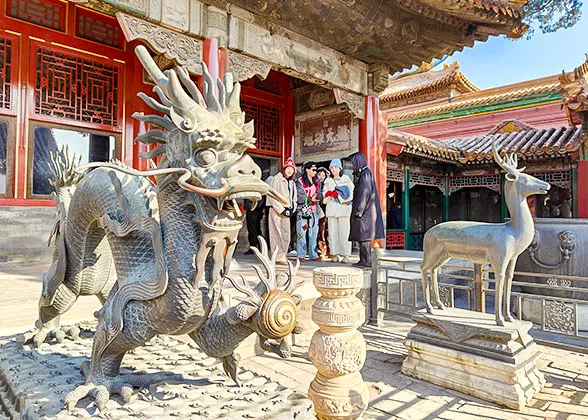 |
| Bronze Dragon & Deer of the Palace |
A pair of bronze deer is flanked by the bronze dragons in front of the Palace. It is said that the reason why Cixi placed the deer is to show her love for Emperor Xianfeng, since in ancient times, deerskin was often used by men to propose to their beloved ones, hence the deer became a symbol of love.
See more Six Western Palaces
- Last updated on Aug. 28, 2025 by Jally Zhang -
